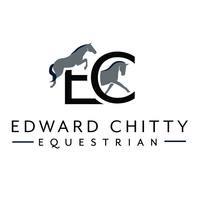
Are You & Your Horse Ready For Bitting Advice? The Steps You Need To Consider First
Equestrian Advice & Guides All Disciplines
Build your business profile for FREE and expose your services to thousands of potential clients!
Create my profile now!
Hi,
This time I’m going to talk about flying changes. Flying changes are an important part of both dressage and show jumping, for dressage they come into play at advanced medium level and for jumping they can be used at any level. In the flying change the horse remains in canter but changes the canter lead during the moment of suspension, when all four feet are off the ground. This can be useful when jumping as when going round a course of fences coming back to trot to change the canter lead would affect the rhythm and fluency.
I like to first introduce flying changes as young as possible, once counter canter, and simple changes are developed I like to start to incorporate flying changes for dressage. For jumping it’s best to introduce them as early as possible. Some horses find the whole concept of flying changes very tricky which is why I like to get them started on it as early as possible.
I like to use these two exercise above to help introduce them. I first use a pole on the ground and with some of other poles either side (as shown in the left hand side image) I ride a 20m circle around the poles to start of with and then once the horse has maintained the inside bend I move over the poles and then change the bend suddenly and ask for the flying change. These aids have to be done at the correct place and timing as the horse needs to be over the pole as the moment of suspension will allow enough time for the horse to change. Once the horse has got used to changing over the left hand side picture you can then remove the side poles and practice over the right hand side one.
Once the horse has got used to changing over the pole, you can now try it in a different position (like the picture above). You can either go straight in the black line or do leg yield/half pass. If you are wanting the changes for jumping you can have the poles as jumps and then once the horse has got used to changing over then remove them and see what they do.
Once this is mastered you can then move onto the trickier exercises below, you can try them with or without poles/jumps.
Notice the flying change is normally only needed when you are changing the bend. So when walking the course try and pick which jumps you need to change the lead over and where you would need to do a flying change. For dressage, once the horse has learnt the flying change remember to watch the horse doesn’t start putting them in where it’s not necessary for instance in counter canter work.
I hope these exercises are useful and please let @horsemart and @equinetuition know how you get on with them.
Until next time,
Edward
Instagram: https://www.instagram.com/equinetuition/?hl=en
Facebook page: https://www.facebook.com/equinetuition/
Website: www.edwardchitty.com

